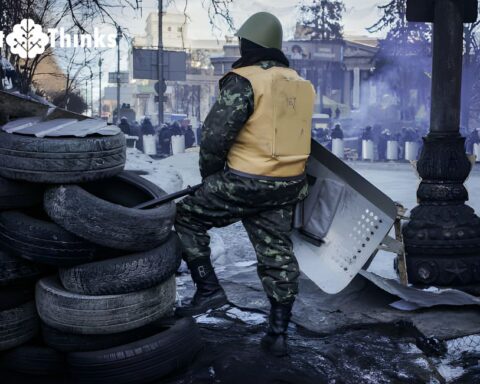Introduction
The Israel-Palestine conflict, often referred to as the Israeli-Palestinian conflict, is a long-standing and deeply complex political and territorial dispute in the Middle East. It has its roots in historical, religious, and political factors, and it revolves around issues such as borders, territory, refugees, the status of Jerusalem, and the self-determination of both Israelis and Palestinians. The conflict has led to multiple wars, uprisings, and negotiations over the years, with numerous attempts to reach a peaceful resolution. This article explores the historical background, key issues, major conflicts, diplomatic efforts, and challenges surrounding the Israel-Palestine conflict, shedding light on the complexity of this enduring struggle for peace.
Historical Background
The roots of the Israel-Palestine conflict can be traced back to the late 19th and early 20th centuries, when Jewish immigration to Palestine, then part of the Ottoman Empire, began to increase significantly. At that time, various factors converged to shape the conflict:
Zionist Movement:
- The late 19th century saw the emergence of the Zionist movement, which aimed to establish a Jewish homeland in Palestine. The movement gained momentum as Jewish immigrants arrived in the region.
British Mandate:
- After World War I, the League of Nations granted Britain a mandate over Palestine. The British Mandate period (1920-1948) saw an influx of Jewish immigrants and increased tensions between Jewish and Arab communities.
Key Issues
The Israel-Palestine conflict is marked by a range of key issues that have fueled tensions and hostilities for decades:
Borders and Territories:
- Disputes over borders and control of territories are central to the conflict. The West Bank, Gaza Strip, and East Jerusalem are key areas of contention.
Refugees:
- Millions of Palestinian refugees and their descendants were displaced during the 1948 Arab-Israeli war and later conflicts. The right of return for these refugees is a contentious issue that has yet to be resolved.
Jerusalem:
- Both Israelis and Palestinians claim Jerusalem as their capital. The city holds great religious significance for Jews, Christians, and Muslims, making it a particularly sensitive issue.
Security Concerns:
- Israel has faced security concerns, including terrorism and conflict with groups such as Hamas, which controls the Gaza Strip. Security issues have shaped Israel’s approach to the conflict.
Self-Determination:
- Palestinians seek the right to self-determination and the establishment of an independent Palestinian state. The question of national identity and sovereignty remains at the heart of the conflict.
Major Wars and Conflicts
The Israel-Palestine conflict has seen several major wars and conflicts that have left a lasting impact on the region:
The 1948 Arab-Israeli War:
- The 1948 Arab-Israeli War, often referred to as the War of Independence or Nakba (Catastrophe), resulted in the establishment of the state of Israel. It also led to the displacement of hundreds of thousands of Palestinian Arabs.
The 1967 Six-Day War:
- The 1967 Six-Day War resulted in Israel’s occupation of the West Bank, Gaza Strip, and East Jerusalem. This occupation has been a defining aspect of the conflict.
Palestinian Uprisings (Intifadas):
- The First Intifada (1987-1993) and the Second Intifada (2000-2005) were Palestinian uprisings against Israeli rule. These events marked significant periods of unrest and violence.
The Gaza Conflict:
- Conflict between Israel and Hamas, which controls the Gaza Strip, has erupted multiple times, with significant hostilities in 2008-2009, 2012, and 2014. These conflicts have resulted in significant humanitarian challenges in Gaza.
Peace Process and Diplomacy
Efforts to resolve the Israel-Palestine conflict through negotiations have been ongoing for many years, with various diplomatic initiatives:
Oslo Accords (1993):
- The Oslo Accords were a series of agreements signed between Israel and the Palestine Liberation Organization (PLO) in the early 1990s. They laid the groundwork for Palestinian self-governance in parts of the West Bank and Gaza Strip.
Camp David Summit (2000):
- The Camp David Summit in 2000 aimed to address key issues such as borders, refugees, and the status of Jerusalem. However, the summit ended without a final agreement.
Annapolis Conference (2007):
- The Annapolis Conference in 2007 sought to revitalize peace negotiations between Israel and the Palestinians. While the talks continued, a comprehensive agreement remained elusive.
The Two-State Solution:
- The two-state solution, involving the creation of an independent Palestinian state alongside Israel, has been a widely endorsed framework for peace. It envisions a secure and recognized Israel living side by side with an independent and viable Palestinian state.
Challenges and Ongoing Tensions
Despite numerous diplomatic efforts and international involvement, the Israel-Palestine conflict remains deeply divisive and unresolved. Several challenges and ongoing tensions persist:
Settlements:
- Israel’s construction of settlements in the West Bank has been a major point of contention. These settlements are considered illegal under international law by many countries.
Blockades:
- Israel has maintained a blockade on the Gaza Strip, contributing to significant humanitarian and economic challenges for Gazans. The blockade has faced criticism for its impact on the civilian population.
Political Divisions:
- Palestinian politics are divided between the Palestinian Authority in the West Bank and Hamas in Gaza. These divisions have complicated efforts to negotiate a unified stance in peace talks.
Conclusion
The Israel-Palestine conflict is a highly complex and deeply rooted dispute that has defied resolution for decades. It is marked by a history of conflicts, unresolved issues, and a multitude of diplomatic initiatives. The conflict’s impact extends beyond the region, affecting international relations and diplomacy on a global scale.
While numerous attempts have been made to bring about a comprehensive and mutually acceptable resolution, the Israel-Palestine conflict remains an enduring challenge. The historical background, key issues, major conflicts, diplomatic efforts, and ongoing challenges highlight the complexity of this struggle for peace. Finding a lasting solution that addresses the legitimate aspirations and concerns of both Israelis and Palestinians remains an urgent and critical goal for the international community. The path to peace is laden with complexities, but the quest for a just and lasting resolution continues in the hope of a more peaceful future for all involved.






